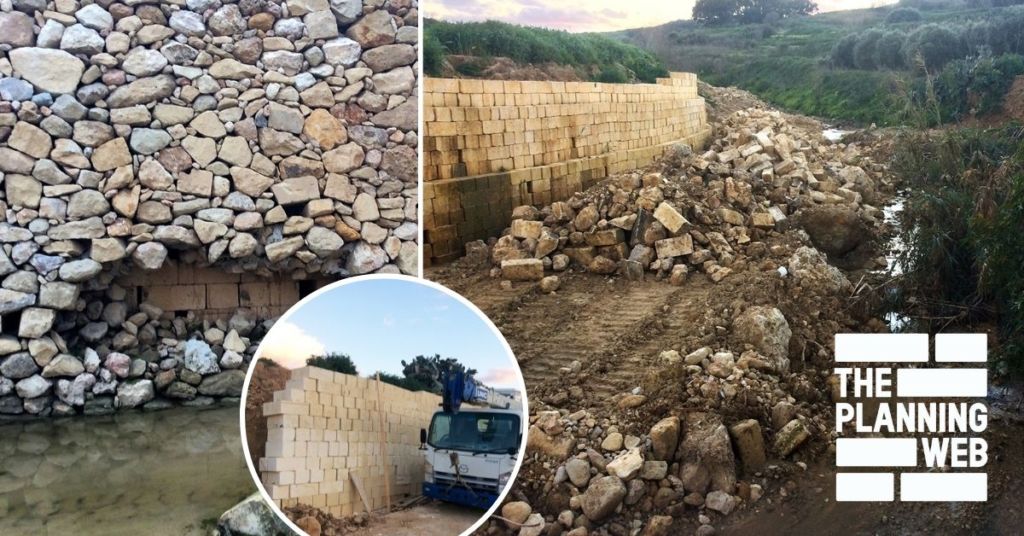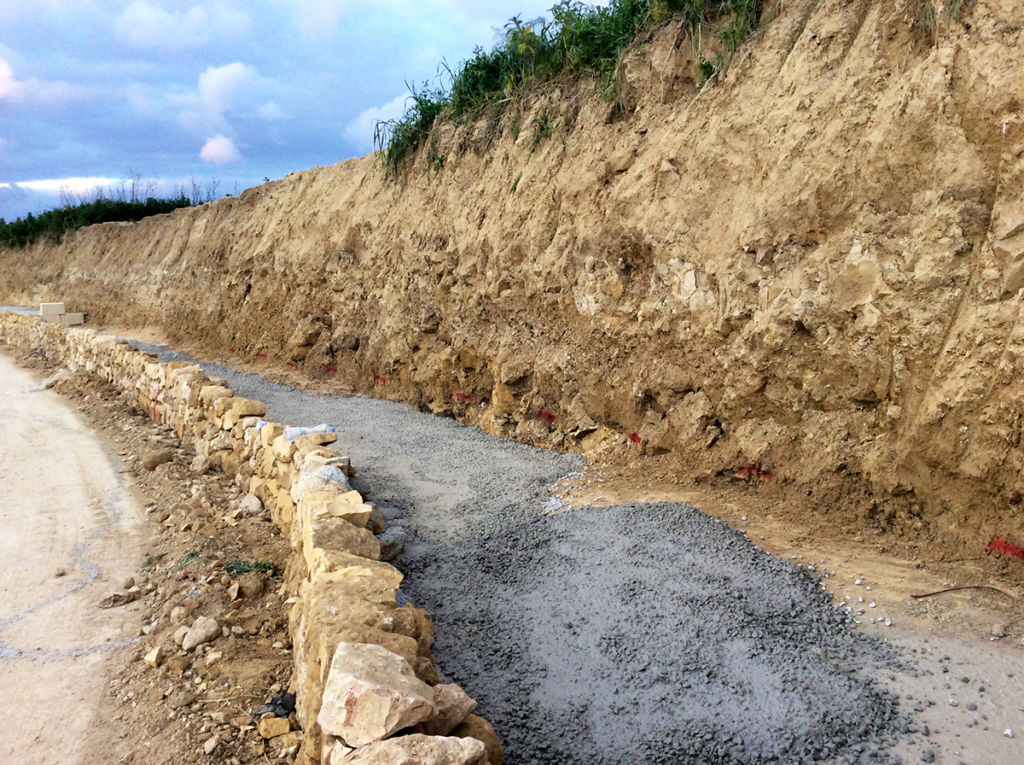Gozo Ministry Set To Lose EU Funds After Restarting Illegal Nature-Damaging Works In Ramla Valley

Major earthworks in Ramla Valley in an EU-funded project that had been stopped by the Planning Authority resumed at pace in recent weeks and only stopped once Lovin Malta sent questions to the Planning Authority and other government entities.
For a week now, rubble has been left strewn on the side of the road, and sides of the valley – which were before lush with vegetation – that have been excavated down the bedrock have been left exposed.
The works have destroyed vegetation and some trees, including rare chaste trees, and turned the valley into something akin to a rubble-strewn building site.
The Gozo Ministry has already been fined by the Environment and Resources Authority (ERA), and the Managing Authority, which administers EU funds, is investigating the works with a view to withdrawing EU funds amounting to €2.2 million.
Yet the Planning Authority (PA) said that no new works have been carried out since works were halted last October. In its replies, it said that it is “informed” that only “remedial works” were being carried out to “shore up collapsing walls and clear any loose debris from the valley system following this year’s storm. These urgent works have to be carried out to avoid danger to public and the free flow of stormwater.”
Lovin Malta is publishing pictures to show that the recent works were in fact a wholesale resumption of the reconstruction of walls in breach of permit conditions agreed with the PA and ERA.


From restoration to thick new walls
The permit had originally been granted for “restoration of rubble walls”, and the works had to adhere to a method statement drawn up by the Gozo Ministry.
The report detailed the nature of the restoration process using rough stones, light machinery, and minimal disturbance to the valley. It specifically said that “the project seeks only to work within the footprint of the existing walls maintaining existing dimensions.” It also said that there would be “no use of mortar” to build the rubble walls.
Instead, last summer the contractor engaged by the Gozo Ministry moved in with heavy excavators and diggers, as well as cranes and trucks, and built new thicker walls – that tripled the footprint – with globigerina blocks of stones. These were then clad with rubble stones, and concrete poured between the rubble stones and globigerina slabs, to give them the appearance of rubble walls.
Vegetation and rare indigenous chaste trees were bulldozed in the process.
After Lovin Malta reported on these works in September, the PA ordered a halt to the illegal works and ERA fined the Gozo Ministry for environmental damage done to the valley.
Last October, the PA told Lovin Malta that the works were “halted until there is agreement with the PA and ERA on how these deviations [from the permit granted] are rectified.”
Yet the works resumed in recent weeks with the same heavy-handedness of last summer: a band of soil cleared and bedrock gouged out from the sides of the valley to clear a path for the eventual laying of a wall of globigerina limestone blocks almost 2 metres thick in some sections. Rubble stones are then clad to this wall with an infill of concrete to give the walls a veneer – or appearance – of rubble walls.
The works have now again gone silent, and the profile of soil and bedrock left exposed, the day after Lovin Malta wrote to the PA, ERA, and the Managing Authority, which is in charge of managing EU rural funds.


Monitoring and loss of funds
ERA said it has already fined the Ministry for Gozo for the earlier destructive works. It said it is monitoring the site.
The project is funded through €2.2 million of the EU’s European Agricultural Fund for Rural Development and topped by another €700,000 of national (Maltese) funds. EU funds were assigned on the basis that the project would fulfil priority area 4 of the EU rural development funds: “Restoring, Preserving and Enhancing Ecosystems.” Its sub-objectives are to protect and enhance biodiversity, improve water management, and tackle soil erosion and soil management.
The funds were assigned to the Eco-Gozo Directorate, which has been carrying out the project. Eco-Gozo was launched around 13 years ago under the Ministry for Gozo. Its objectives are to steer Gozo towards sustainable development and protect nature in Gozo.
Works are supposed to be monitored by three entities: the PA, ERA, and SCH (Superintendence of Cultural Heritage). Yet the illegal works have been so extensive that it is doubtful whether these entities, or at least some of them, are doing much monitoring.
In fact, in its replies, the PA simply said that “the PA is informed” that current works are only urgent works “to avoid danger to public and the free flow of stormwater.” This suggests that the PA officials have not visited the site.
Meanwhile, the Managing Authority, which administers the EU funds, “emphasised that EU funding is possible only when projects being supported are in line with all the relevant legislation and regulations.”
It said it currently looking into the matter, and may yet decide to withdraw the €2.2 million in EU funds granted for the project.


Check out Lovin Malta’s Planning Web, the country’s first transparent and open platform letting you look at the ins and outs of Malta’s urban planning sector.
Victor Paul Borg has lived in various countries and worked as an author, journalist and photographer for around 25 years. His work has been published widely in many countries and is also featured on his website, victorborg.com.
What do you think of the project?
